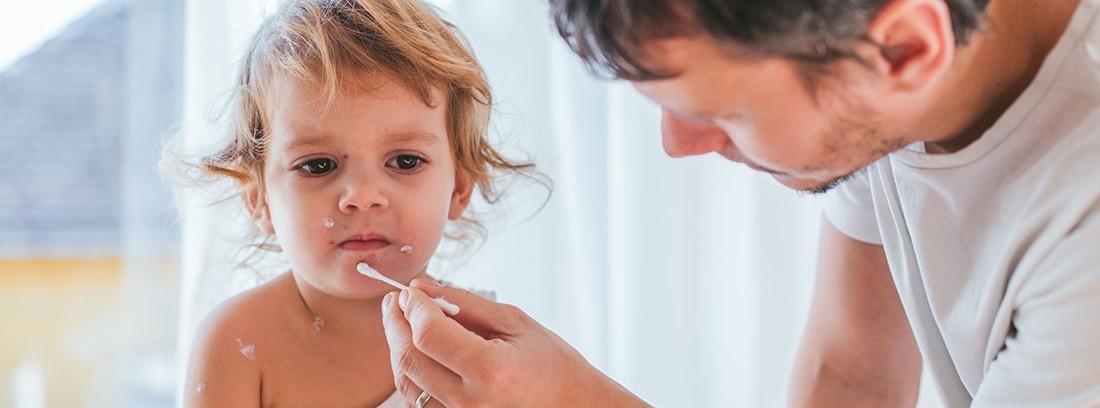Infant acne

It is a skin disease that affects 20% of infants and it is more common in children. Infant acne manifests itself after 3-6 months of life and it can persist up to one and a half years of age. There may be more persistent cases. The lesions on the skin are similar to the typical ones that appear in adolescent acne.
Some newborns may have lesions similar to. Neonatal acne begins in the first two weeks of life. It affects more boys than girls. If acne appears after three months of life it is called "Infant acne."
The cause is unclear but appears to be related to the stimulation of the sebaceous glands by the hormones of the mother during pregnancy and of the baby after birth.
The first manifestations appear at birth or in lactation. Us reminiscent of juvenile acne; they are papules or pustules on the cheeks, chin and forehead.
Causes
The causes are not entirely clear. At first it was supposed to be due to a hormonal stimulation of the. It is currently thought that it may be of infectious origin by a germ called Malazzesia. There is nothing proven.
Other causes may be: taking medications that contain iodine, bromine, or corticosteroids on the part of the mother who gives the breast and excessive use of creams and ointments on the face (cosmetic acne).
Symptoms
They look themselves, especially on the face, cheek comedones and erythematous papules (). The lesions may disappear in a few weeks or, in more severe cases, within three years.
The presence of child acne it can be a risk factor for acne during adolescence.
Treatment
In mild forms, only one good skin cleansing with soap and water, and no special treatment will be required.
Are given topical antibiotics and antiseptics. Some severe cases may require more aggressive treatments.
(Updated at Apr 14 / 2024)